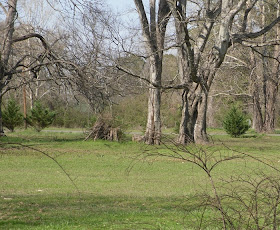From Sicily Island: A Partial History, compiled by Mickie Smith:
Just as education was of prime importance to the founders of our country, it was of equal importance to the early settlers of Sicily Island. In the infancy of the area, children were taught in the home by the mother or a tutor, who lived with the family.
Just as education was of prime importance to the founders of our country, it was of equal importance to the early settlers of Sicily Island. In the infancy of the area, children were taught in the home by the mother or a tutor, who lived with the family.
The earliest known school building on Sicily Island was Knapp's Academy, established in 1849. For more information on this academy, click Here
The accepted principle was that parents able to do so should provide for the instruction of their children. There was no public funding for schools until 1847, when the first free-school act was adopted in the State. By the terms of the act, any youth between the age of six and sixteen years of age was entitled to at least three years' schooling. (Fay, Edwin W., History of Education in Louisiana, Govt. Printing Office Washington, D.C., 1898, p. 69)
 |
| Governor Francis T. Nichols |
During and after the Civil War, the Police Jurors and residents were so financially burdened, there was no money for public education. During the corrupt carpetbag regime following the war, public education suffered even more.
In 1877, Francis T. Nichols was elected governor of the State, and began the herculean task of trying to bring order out of chaos. The educational system was given a general legal overhauling, and a superintendent in each parish was provided for.
It was in this same year, 1878, that the Police Jury passed two ordinances pertaining to the schools. (Catahoula Parish Police Jury Minutes, Ordinance #360, 1878)
After the 15th day of April 1878, all stores, liquor shops and trading boats where ever merchandise, spirits or liquor are sold are hereby closed on Sunday except for the purpose of selling medicine for sickness or funeral goods and to travelers passing through the parish for their own needs. Any person in violation will be liable to a fine of not less than $50 and imprisoned at the discretion of the court. One half of said fine to go to the informer and the balance to the credit of the Parish School Fund.
It shall be unlawful for any person to hunt on the Sabbath day or to discharge fire arms of any kind on that day as an amusement or pass-time. Any person caught in violation will be fined not less than $25 with one half going to the informer and the balance to the Public School Fund.
Schools in Ward Two were numerous. Because most of the Island's acreage was divided into large sections and because of the irregularities and discomforts of travel, school was held on each plantation whenever a teacher could be found and employed, usually three to five months a year.
Such schools included Waverly Tree School, a log cabin in which school sessions were held for three months each year; later the school year was increased to six months. Teachers boarded with certain families in lieu of payment, while parents of other students paid the teachers wages.
The old Peck School was established around 1896-1897. The one-room school held classes taught in different years by these teachers: Henry S. Doniphan, Margaret Sprague and Gladys Martin.
The school was closed for some time and reopened in 1914 or 1915. Teachers during this period were: Junius Sapp, Estelle Furr, Carrie McGuffee, Eola Smith and Blanche Wilson.
Before 1900, another one-room school was built in the Maitland area to serve as the educational facilities of ten to fifteen children. Later, an additional room was constructed so that the upper and lower grades could be taught in separate rooms. Teachers included Pearl Brooks, Alice Hennegan, Mary Sheppard, Gladys Martin, Margaret Knight and Frankie Scott.
Other schools in Ward One were located on Hedgeland Plantation and Cathskill Plantation. Hedgeland was located on Tiger Bayou and was directed by Miss Bessie Carter. Miss Camille Hoover once taught about ten children in the small building situated near Cathskill.
At the turn of the century, the building now recognized as the Spencer Home was designed as a school and was built by the community. The children living in the vicinity of Florence attended school here until 1912.
 |
| Spencer House/School location |
Before this school was built, there was a small log cabin which stood in what is now the field of Mrs. Georgia Peniston, which Mr. Tom Enright held classes a few months each year.
 |
| Location of Cabin on Sicily Ave used for School |
In early 1900, another school was in progress in the area now called Polk Valley. Classes were held in an old church which was located next to what is presently the home of Bill Cotten. Twenty or twenty-five students were taught at various times by innumerable teachers, including Laura Chisum and Louise White. Classes were held here until 1912, when the students began attending the Central School.
During 1900-1908, a school was located in about the same place that is now the New Pine Hill Cemetery. this was called the Pine Hill School. Classes were taught five months a year, as most of the pupils were needed at home for farm work. This two-room building had a Mr. Claggett as principal and at different sessions, Miss Lina Krause, Tom Hardin, Miss Sadie Higgs and Miss Willie Bruce as teachers.
Sicily Island Schools, Part 2
Sicily Island Schools, Part 2



No comments:
Post a Comment